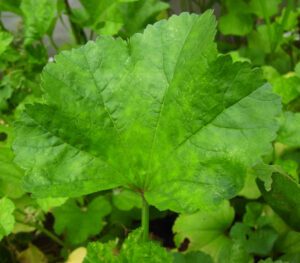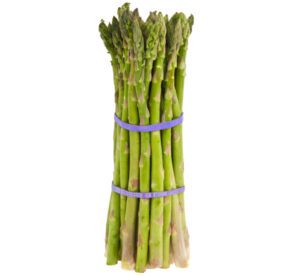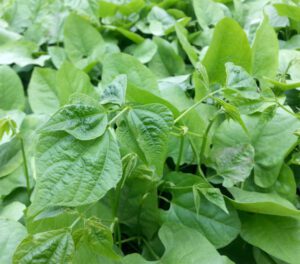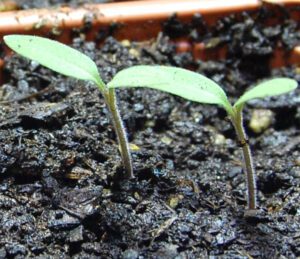You can consider growing cabbage in your garden, because it is an excellent addition to any home garden.
Although growing cabbage may seems very difficult, especially for the beginners. Because cabbage like and grow only in cool temperatures and it attracts some types of garden pests.
Cabbage (Brassica oleracea var. capitata) is actually a leafy green, white (pale green), or red (purple) biennial plant which is grown as an annual vegetable crop for it’s dense-leaved heads. The cabbage that we grow today is descended from the wild cabbage.
Cabbage is a great source of vitamin C, vitamin K (containing 44 percent and 72 percent respectively) and dietary fiber.
It is also a moderate source of vitamin B6 and folate, with no other nutrients having significant content per 100 grams serving.
Cabbage are prepared in many different ways for eating. It can be pickled, fermented, stewed, sauteed, braised, steamed and even eaten raw.
You can enjoy this good vegetable if you start growing cabbage organically in your home garden.
How to Grow Cabbage in Home Garden
Cabbage is grown throughout the world and it is a popular vegetable. It is an excellent addition to any home garden. And growing cabbage organically in your home garden will help you save money and will also give you fresh vegetable for your family. Here we are describing all about growing cabbage from planting, caring to harvesting.
Choose a Variety
Before you start growing cabbage, choose a good variety that grows well in your area. There are actually many different cultivar groups of cabbage available throughout the world.
And within these groups there are many varieties or cultivars. Most common cultivar group of cabbage are listed below.
Green: This is the most commonly grown cultivar with light to dark green and slightly pointed heads.

Red: This cultivar is commonly used for pickling or stewing. It has smooth red leaves.
Savoy: The savoy cultivar group has mild flavor and tender texture and is characterized by crimped or curly leaves.
Spring Greens: They are commonly sliced and steamed and are loose-headed.
White (Dutch): These cultivars have smooth, pale green leaves.
You can choose any cultivar from these groups. Just ensure it’s availability and growing ability in your area.
Some common and most popular cabbage varieties are Lei-Choy, Ruby Perfection, Golden Acre, Primo, Stonehead, Early Jersey Wakefield, Blue Vantage, Cheers etc.
Purchase Seeds
Cabbage is grown from seeds. As cabbage is a common vegetable, so you will easily be able to purchase seeds from any of your nearest seed supply stores. Always try to purchase high quality seeds from well known seed suppliers.
Best Time for Growing Cabbage
Cabbage grow well in the areas with cold weather. So you should plant early in the season so the plants grow and mature before the arrival of warm weather.
Although, today there is a wide selection of cabbages available with different planting times. But the regions with warm weather are not good for growing cabbage.
Preparing the Soil
Cabbage grows well in sandy, loamy and sandy-loamy soil with the availability of full sun. They are heavy feeders and require fertile soil which is enriched with organic materials.
So you have to prepare the soil by adding lots of organic materials for growing cabbage in your home garden. Till the soil and add aged well-rotted manure or compost.
Planting
Cabbage is grown from seeds. So you can start the seeds earlier and transplant later. If you live in the areas with colder climates, consider starting the seeds indoor 6-8 weeks prior to the last spring frost. And transplant outdoors 2-3 weeks before the last expected frost date.
You need to harden off the plants before transplanting. Choose a cloudy afternoon for planting the cabbage transplants. Cabbage should be spaced 1-1.5 ft apart from rows to rows and plants to plants.
Caring
Cabbage requires additional caring for better growth. Here are the common caring steps.
Feeding/Fertilizing
As we have mentioned previously, these plants are heavy feeders. So you will need to provide additional fertilizers for better growth.
Add homemade compost or well-rotted manure for providing additional nutrients for the plants. First fertilization should be done within the first 3 weeks after transplanting.
Watering
Cabbage requires constant watering for better growth. So keep the soil evenly moist, but not wet. Watering about 2 inch per week will be good.
Mulching
Mulching is good for both retaining moisture in the soil and for controlling weeds. Use straw, hay, grass clippings or dried leaves for mulching.
Controlling Weeds
Adequate mulching will help to get rid of most of the weeds. Hoe between rows and mulch again if you notice any weeds.
Pests and Diseases
Not only the cabbage, but also all the members in this family are susceptible to a variety of pests and disease.
Club rot, slugs, cabbage worms, blackleg, powdery mildew, cut worms, aphids, flea beetles and splitting are some common problems for growing cabbage organically in home garden.
Watch for any signs of trouble and take necessary steps as soon as possible. Always try to use organic materials to get rid of all these problems. Remove and destroy the damaged or disease affected plants.
Harvesting
You can start harvesting cabbage once they grow to your desired size. Actually you can start harvesting cabbage when the heads are firm and glossy in appearance.
Just pull up the cabbage from soil for harvesting. Depending on the variety, most of the cabbage variety will take about 70 days to reach maturity.
These are the common and simple steps for growing cabbage organically in your home garden. Hope you have enjoyed this guide! Happy gardening 🙂






